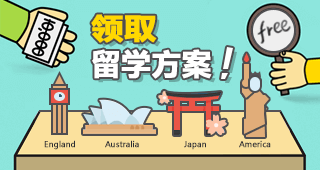躺 lie,lay,lain,lie in bed again;
撒谎 lie,lied,lied,dont be a liar;
产蛋 lay,laid,laid,a hen laid an egg;
放置 A loy picked it up,and laid it in the bag.
常用the的情况
特指、重现用定冠;独一无二把冠添。
党、政、机关开会议,组织农业帽在前。
江山河海和峡湾;沙岛有帽较安全。
阶级国家分朝代;厂矿造船要带衔。
节目奏乐衣冠严,习惯随俗记心间。
注:冠、帽、衔之类均指定冠词。
定冠词的习惯用法
①某家人或某夫妇一般用the+复数。如:the Smiths
②表示整个民族或族人一般加the。如 the Chinese/English
③少数山脉群岛也不用the。如Mount Tai。如名词中有of短语则一般有the.如:the Mountain of seven
④中国的湖泊一般加 the。如:the West Lake.
R>⑤the+adj表示类别。如:the rich.
⑥年代,年龄的约数前常用the。如:in the 1950s,in his teens.
⑦表计量单位用the含有“每”、“每一”
It sells at two dollars the pound.
It sells 16 dollars to the pound.
John is paid by the hour.
⑧下列结构中的冠词。
-have+the+抽象名词+to do sth = be so +adj+ as to do sth
如:He has the politeness/kindness to say hello to me.
=He is so polite/kind as to say hello to me.
不用冠词的场合
抽象、物质、专有名,代词基数用作限定;
泛指节假季节星期几,球棋、呼语与餐名;
刊物、公告与标题,普通名词并列紧相邻;
唯一职位,学科与语种,洲、国、省、市、县街路名。
上述口诀用心牢记,并结合下列说明予以理解
①抽象、物质名词和专有名词一般无冠词,但物质名词、抽象名词具体化,或专有名词泛指时,常用不定冠词,例:
a Mr Wang/a climb/a swim.
for a while/in a hurry/a fire Here is a life of struggle.
Physics is a science. There was a heavy rain last
night.等抽象名词受of短语修饰或上下文已予限定,用the.
如:the science of speech sounds 语音学
the music of the film, do me the favor to do sth.
②代数词、基数词作前置定词,不用冠词。
③泛指的节假日、季节、星期前不用冠词。但是季节名词表特定时间或受of知识修饰时用the.如:in the winter of 1948。
有时泛指时间用a+adj+名词。如:have a hot summer.
④餐名前一般无冠词。但餐名受adj修饰时常常有a(an).特指时用the.
如:have a good supper. The breakfast was well cooked.
dinner表“宴会”时,是可数名词,有各种冠词修饰give a dinner to them.
⑤普通名词并列时不用冠词
soul and heart/husband and wife/day after day/arm in arm/hand in hand.
⑥语种前不用冠词。但the English结构用the。
What's the English for labour.
The English of shakespear.

作限定时用the
⑦广场、公园、学校、建筑物等专有名词,由“专有名词+普通名词”构成时不用冠词。但the University of Beijing结构和the
Beijing station中用the.
动词形式的变化
动词根本是原形,
变化形式有四种:
原形词尾加“s”,
现在第三单人称;
过去原形加“ed”,
过去分词也相同;
原形加上“ing”,
现在分词或动名。
原形词尾加“s”,
如同名词复数式。
若加“ed/ing”,
以下情况要注意:
词尾有e只加d,
ing去无声e;
词尾ie变成y,
然后再加ing;
辅音之后y结尾,
y要变i加ed;
现在分词不变y,
直接加上ing ;
词尾重读闭音节,
加缀辅音都双写,
r做结尾也一样,
重读音节r双写;
结尾字母是“t”,
不是重读也双写。
过去分词过去式,
不按规则也有些。
第三个
一般现、过用be done,be有人称、时、数变。
完成时态have done,被动将been加中间。
一般将来shall (will) do,被动变do为be done。
将来进行无被动,shall (will) be doing,
现在完成进行同,have (has) been doing。
现、过进行be doing, 被动be加being done。
情、助、有、是妥安排,一律随新主语变。
否定助后加not,疑问一助置主前。
主语恰是疑问词,直陈语序主在前。
一般情助加be done,双宾多将间宾变。
复合宾语宾变主,宾补、主补相应变
 日本
日本
 韩国
韩国
 英国
英国





 1602
1602
 2019-05-23 15:40
2019-05-23 15:40


















